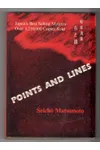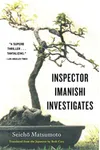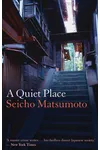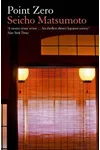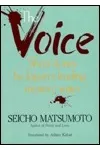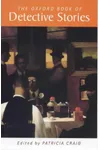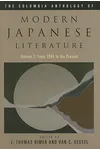Picture a Japanese storyteller who turned the mystery genre upside down with gritty realism and sharp social commentary—meet Seicho Matsumoto! Born in 1909, this self-educated writer didn’t publish his first book until his forties, yet he became Japan’s master of detective fiction, crafting over 450 works that still captivate readers worldwide.
From exposing corruption to weaving tales of human psychology, Matsumoto’s stories dig deeper than whodunits, reflecting the complexities of post-war Japan. His novels, like Points and Lines, sold millions and inspired iconic films, earning him a lasting legacy. Ready to dive into his thrilling world?
The Making of Seicho Matsumoto
Born Kiyoharu Matsumoto on December 21, 1909, in Kokura, Fukuoka prefecture, Seicho grew up in a working-class family with only an elementary school education. He toiled as a laborer before landing a job at the Asahi Shimbun newspaper, where his knack for printing and journalism sparked his storytelling passion. At 40, he began writing, and in 1952, his autobiographical tale, The Legend of the Kokura Diary, won the prestigious Akutagawa Prize, launching his literary career.
Self-taught and curious, Matsumoto drew inspiration from real-life scandals and global mystery writers like Freeman Wills Crofts. His outsider perspective gave his work a raw, authentic edge, blending meticulous research with a keen eye for societal flaws.
Seicho Matsumoto’s Unforgettable Stories
Matsumoto revolutionized Japanese detective fiction by ditching formulaic puzzles for stories steeped in human psychology and social realism. His novels often explored post-war nihilism, exposing corruption in police and political systems. Unlike traditional mysteries, his investigations probed not just the crime but the society behind it, making his work both thrilling and thought-provoking.
His 1958 novel, Points and Lines (also known as Tokyo Express), is a masterclass in suspense, unraveling a supposed double suicide through obsessive train timetable details. Inspector Imanishi Investigates (1961) follows a dogged detective chasing a killer across Japan, blending procedural grit with cultural nuance. Pro Bono (1961) dives into legal intrigue, while A Quiet Place (2016 in English) explores a bureaucrat’s obsession with a mysterious death. These works, translated into multiple languages, showcase Matsumoto’s knack for crafting complex, relatable characters.
His writing style—accessible yet layered—appealed to a broad audience. Matsumoto’s newspaper-like prose, rich with Japanese cultural details, pulled readers into his world, from smoky train stations to shadowy political deals. His collaboration with director Yoshitaro Nomura on films like Castle of Sand cemented his stories as cinematic treasures.
Why Seicho Matsumoto Matters
Matsumoto didn’t just write mysteries; he redefined them. By introducing the ‘social detective story,’ he brought realism to a genre once dominated by locked-room puzzles, influencing writers like Keigo Higashino and earning comparisons to Georges Simenon. His works, which sold millions in the 1960s, made him Japan’s top-earning author and a cultural icon, with a museum in Kitakyushu honoring his legacy.
His fearless critique of corruption and activism during the 1960 Anpo protests added depth to his legacy. Even today, his stories resonate, offering a window into post-war Japan and universal themes of justice and morality. Matsumoto’s ability to blend suspense with social commentary keeps his work timeless, inspiring readers and filmmakers globally.
About Seicho Matsumoto
- Born: December 21, 1909, in Kokura, Japan
- Died: August 4, 1992, from cancer
- Key Works: Points and Lines, Inspector Imanishi Investigates, Pro Bono, A Quiet Place
- Awards: Akutagawa Prize (1952), Kikuchi Kan Prize (1970), Mystery Writers of Japan Award (1957)
- Fun Fact: Served as president of Mystery Writers of Japan from 1963 to 1971
Snag Points and Lines or Inspector Imanishi Investigates and dive into Seicho Matsumoto’s thrilling blend of mystery and social intrigue! His stories are your ticket to a gripping, thought-provoking ride through Japan’s shadowy underbelly.
